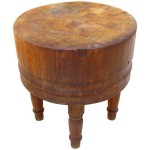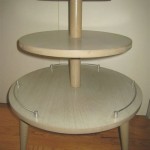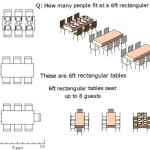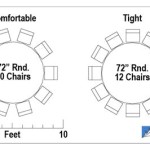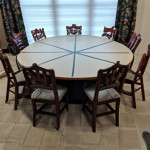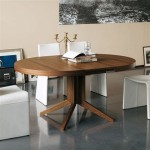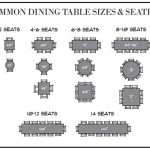How To Use a Plastic Tablecloth as a Backdrop in a Wedding
Creating a visually appealing backdrop for a wedding can significantly enhance the overall ambiance and provide a memorable setting for photographs and special moments. While professional backdrop services can be costly, utilizing a plastic tablecloth offers an affordable and surprisingly effective alternative. This approach allows for creative customization and budget-conscious decorating, making it an attractive option for couples seeking cost-effective elegance.
The successful implementation of a plastic tablecloth backdrop involves careful planning, selection of appropriate materials, and a thoughtful execution strategy. This article provides a detailed guide on how to use a plastic tablecloth as a backdrop in a wedding, covering essential steps from selection to installation, while also addressing potential challenges and offering practical solutions.
Choosing the Right Plastic Tablecloth
The foundation of a successful plastic tablecloth backdrop lies in selecting the right materials. The quality, size, and color of the tablecloth significantly impact the final aesthetic. Opting for thicker, higher-quality plastic tablecloths is crucial for durability and visual appeal. Thin, flimsy tablecloths are prone to tearing and may appear transparent, diminishing the desired effect. Gauge the thickness of the plastic by feeling the material; a sturdier feel typically indicates better quality.
The size of the tablecloth is another critical consideration. Measure the intended backdrop area to determine the necessary dimensions. It is always better to err on the side of having extra material than not enough. Excess material can be trimmed or draped creatively, while insufficient material can lead to an incomplete and unsatisfactory backdrop. Consider the desired height and width of the backdrop, as well as any allowance needed for draping or gathering.
Color selection is paramount in aligning the backdrop with the wedding’s overall theme and color palette. Consider the existing décor, floral arrangements, and lighting when choosing the tablecloth color. Solid colors are a safe and versatile choice, but patterned or textured tablecloths can add visual interest. Lighter colors, such as white, ivory, or pastels, tend to create a softer and more romantic ambiance, while darker colors can add a touch of drama and sophistication. Metallic finishes, such as gold or silver, can introduce an element of glamour, but should be used sparingly to avoid overwhelming the space. It is advisable to obtain samples of different tablecloth colors and hold them up against the venue's walls and décor to ensure a harmonious match.
Beyond the basic color options, consider the finish of the tablecloth. Some plastic tablecloths have a matte finish, while others have a glossy sheen. Matte finishes often look more elegant and less "plasticky," while glossy finishes can reflect light and add brightness. The choice depends on the desired aesthetic and the overall lighting conditions of the venue. A matte finish may be preferable in venues with ample natural light, while a glossy finish can help brighten up darker spaces.
Preparation and Design Considerations
Prior to installation, carefully prepare the plastic tablecloths to ensure a smooth and professional-looking backdrop. This involves inspecting the tablecloths for any tears, stains, or imperfections. Lay the tablecloths flat to remove any creases or folds. If necessary, use a low-heat iron or a garment steamer to gently smooth out any stubborn wrinkles. Test the heat on an inconspicuous area first to avoid melting or damaging the plastic.
Design considerations are crucial in determining the final look of the backdrop. Several design options exist, ranging from simple draped designs to more elaborate and intricate arrangements. A simple draped backdrop involves hanging the tablecloths in a cascading fashion, creating a soft and flowing effect. This design is easy to implement and requires minimal effort. Another option is to gather the tablecloths to create a ruched or pleated effect, adding texture and dimension to the backdrop. This can be achieved by gathering the fabric at regular intervals and securing it with pins or clips.
For a more elaborate design, consider cutting the tablecloths into strips and creating a fringe or tassel effect. This involves cutting the tablecloths into long, narrow strips and attaching them to a rod or string. The fringe can be hung vertically or horizontally, depending on the desired effect. Another option is to create a layered backdrop, using multiple tablecloths of different colors or textures to add depth and visual interest. This involves layering the tablecloths on top of each other, creating a multi-dimensional effect.
Incorporating additional decorative elements can further enhance the backdrop. String lights, floral garlands, ribbons, and balloons can be added to complement the tablecloths and create a cohesive look. String lights can be draped along the backdrop to add a warm and romantic glow. Floral garlands can be attached to the tablecloths to introduce a touch of nature and elegance. Ribbons can be tied around the tablecloths to add color and texture. Balloons can be arranged around the backdrop to create a festive and celebratory atmosphere. When incorporating additional elements, ensure they align with the wedding's theme and color palette to maintain a consistent and harmonious aesthetic.
Installation Techniques and Securing the Backdrop
The installation process is arguably the most critical aspect of creating a successful plastic tablecloth backdrop. Improper installation can lead to a sagging, uneven, or unstable backdrop, undermining the entire effort. Several installation techniques can be employed, depending on the venue's infrastructure and the desired design. A common method involves using a backdrop stand, which provides a sturdy and adjustable framework for hanging the tablecloths. Backdrop stands are readily available for purchase or rent and offer a professional and reliable solution. Ensure the backdrop stand is appropriately sized for the intended backdrop area and is capable of supporting the weight of the tablecloths and any additional decorative elements.
If a backdrop stand is not available, alternative solutions can be implemented. Walls can be used as a support structure, provided they are clean and suitable for hanging decorations. Command strips or hooks can be used to attach the tablecloths to the wall, but it is essential to test the adhesive's strength on an inconspicuous area first to avoid damaging the paint or wall surface. Another option is to use a curtain rod or wire strung between two points. This method is suitable for creating a draped or cascading backdrop. Ensure the curtain rod or wire is strong enough to support the weight of the tablecloths and is securely fastened to the walls or support structures.
Securing the tablecloths to the chosen support structure is crucial for preventing sagging and ensuring a smooth and even backdrop. Clips, pins, or tape can be used to attach the tablecloths to the backdrop stand, wall, or curtain rod. Clips are a versatile option, allowing for easy adjustments and re-positioning. Pins can be used to create a more secure and permanent attachment. Tape, such as double-sided tape or gaffer tape, can be used to adhere the tablecloths to the support structure, but it is important to use tape that will not damage the surface or leave residue. When securing the tablecloths, ensure they are evenly distributed to prevent sagging or bunching. Regularly check the stability of the backdrop during the installation process and make any necessary adjustments to ensure it is secure and visually appealing.
For outdoor weddings, additional precautions should be taken to secure the backdrop against wind and weather. Weights, such as sandbags or water containers, can be used to stabilize the backdrop stand and prevent it from tipping over. Securing the tablecloths to the ground or surrounding structures can also help prevent them from blowing away. Additionally, consider using weather-resistant materials and adhesives to ensure the backdrop can withstand the elements. It is advisable to have a backup plan in case of inclement weather, such as moving the backdrop indoors or having an alternative indoor location for the ceremony or photographs.

Photo Booth Backdrop Makoodle

Photo Booth Backdrop Using Plastic Tablecloths Monica Lerma

Diy Plastic Tablecloth Backdrop With Curtain Rods

Wedding Candy Backdrops This Looks Easy Enough To Make And I Even Like The Table Cloths

Diy Plastic Tablecloth Backdrop Created By New Era Wedding Event Planning

Beautiful Sheer Voile D By Kcee S Party Pieces That Just Perfect For A Gender Reveal Or Baby Shower

Diy Backdrop Tablecloth Inexpensive Backdrops

Diy Backdrops Using Plastic Tablecloths Photography Backdrop

Backdrop Use Plastic Tableclothes With Twine To String Across Back

Plastic Table Cover Backdrop
Related Posts


